Cruising the west side of Vancouver Island requires frequent hops in the ocean. The hops are typically short—15 to 30 nautical miles—but even a few hours in rough conditions can be awful. Three headlands can create particularly rough conditions: Cape Scott, Brooks Peninsula, and Estevan Point. Brooks is perhaps the worst of all. It juts out from Vancouver Island into the Pacific Ocean like an enormous, flat, rectangular slab. Dramatic cliffs rise from a rocky, foreboding shoreline. Wind accelerates, currents converge, and nastier-than-usual seas result. Today we rounded Brooks.
Environment Canada called for light winds building to northwest 15-25 knots in the afternoon, so we eagerly set our alarms for 5:45 a.m. to take advantage of the morning calm. When the alarms went off, however, it was still dark. We waited 30 minutes or so until there was a bit more light, which revealed thick fog.
The upside of fog is that it usually means calm winds. Solander Island, the weather reporting station at the northwest corner of Brooks Peninsula, reported 4 knots.
Leaving Klaskish Basin in the fog through the narrow opening was a fun challenge. The channel is about 60-75 feet wide and the charts are inaccurate, but a mid-channel course is safe.
Here’s what it’s like without fog. Just imagine the challenge with little to no visibility!
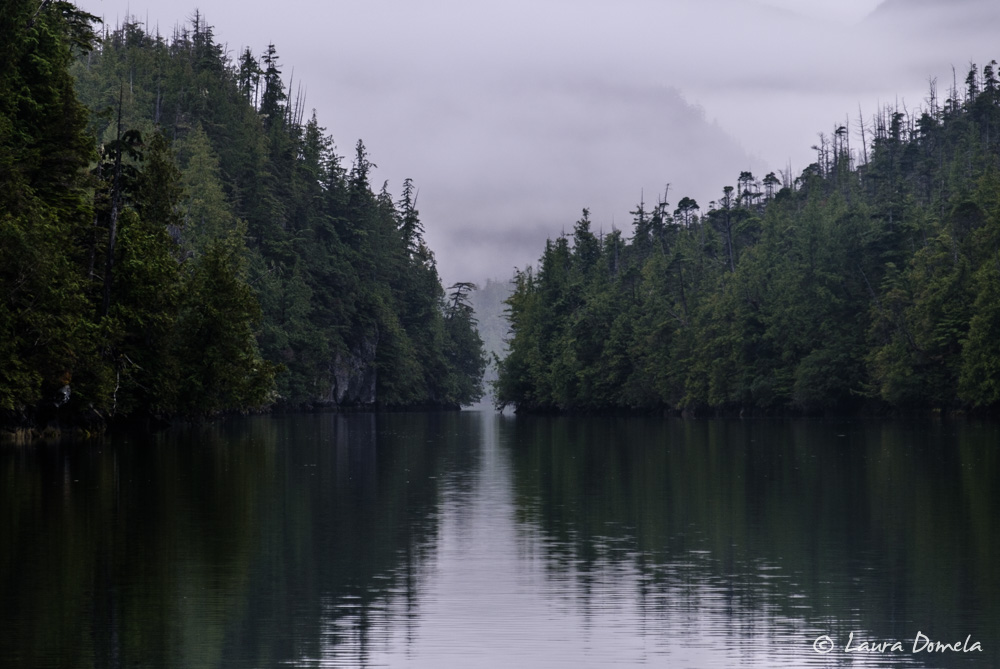
With the radar range at 1/8 mile, the channel showed clearly and we steered right down the middle.
Thick fog persisted for most of our cruise around Brooks, but seas were calm with no more than about 5 knot winds and very little swell.
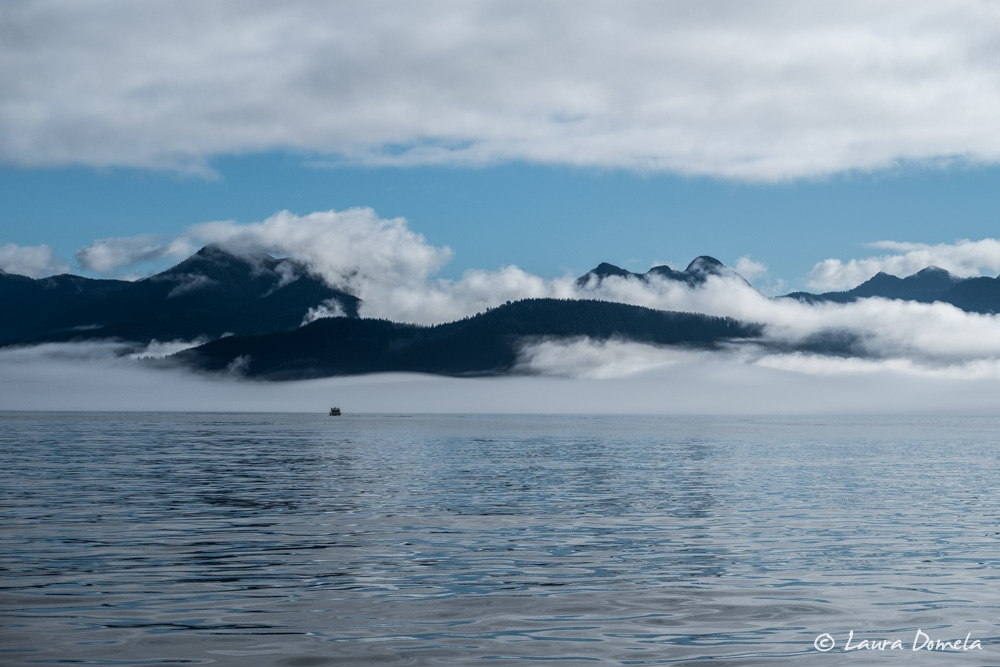
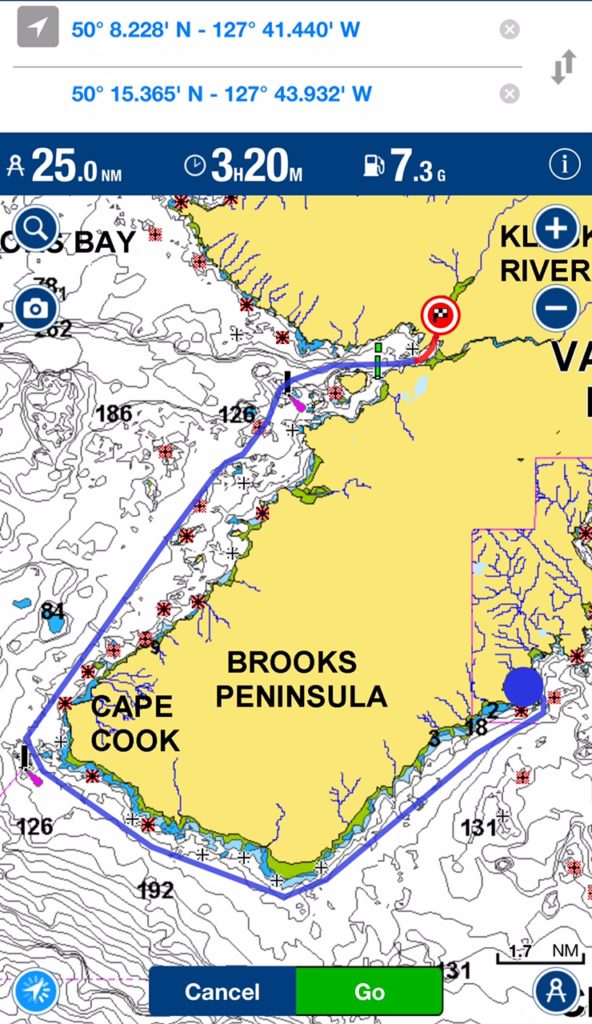
We arrived at Columbia Cove, which indents the south shore of Brooks Peninsula, just after 9:30am, and had the whole (sunny!) day to explore.
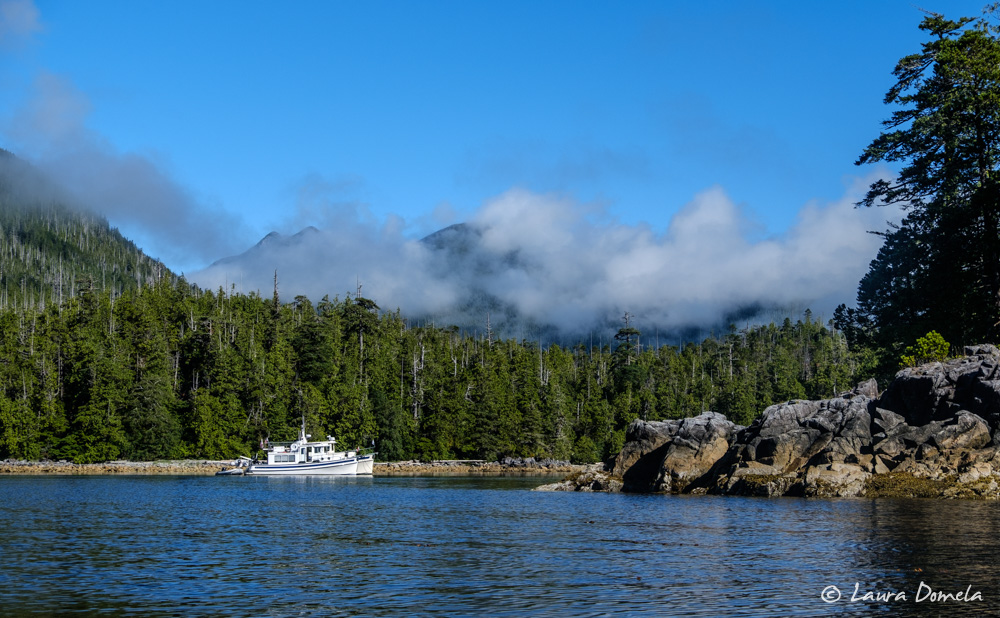
We checked the tides (nearest reporting was Bunsby Islands, about 7 miles away) and it looked like low tide was 7:48 a.m. and high was at 2:16 p.m. We took advantage of the lower tide and took the kayak out for some exploring. The rocky shoreline of the west coast with its many rugged passageways makes for some great kayaking, and we spent about two hours paddling the inlet and threading our way through cool rock formations. At one point we stopped to listen to what sounded like a howl, but we didn’t hear it a second time, so we continued on.
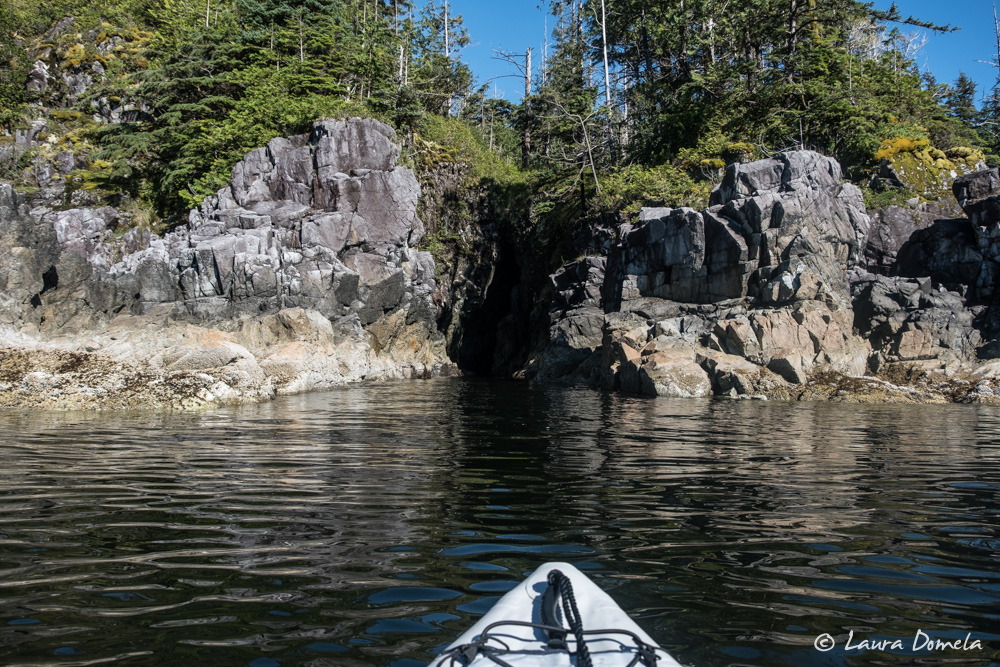
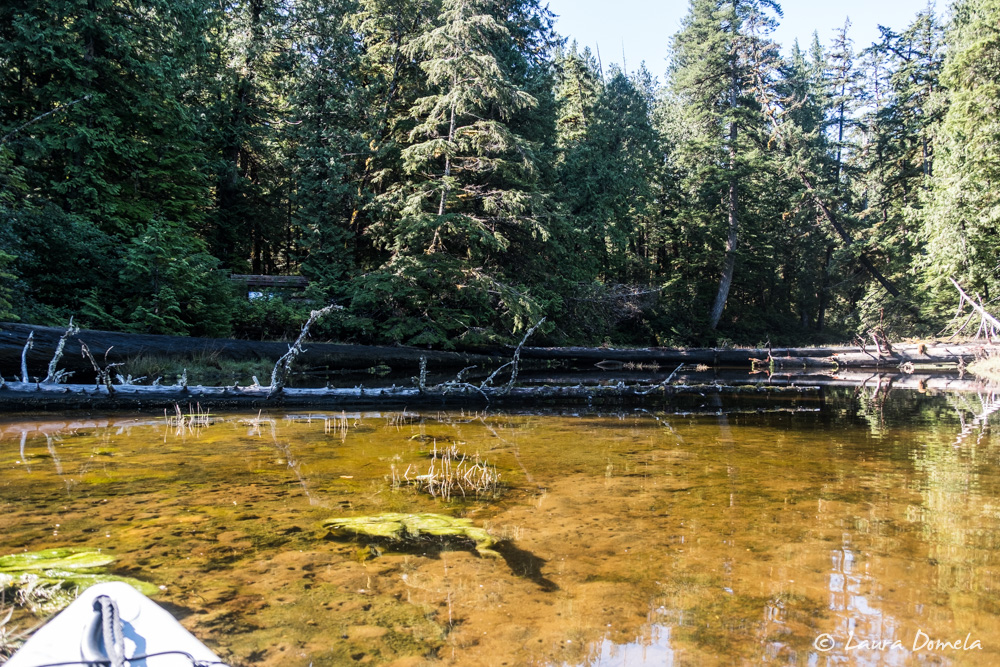
We found what looked like wolf tracks (either that or an enormous dog with no people accompanying it) on the far beach as we headed back to the boats.
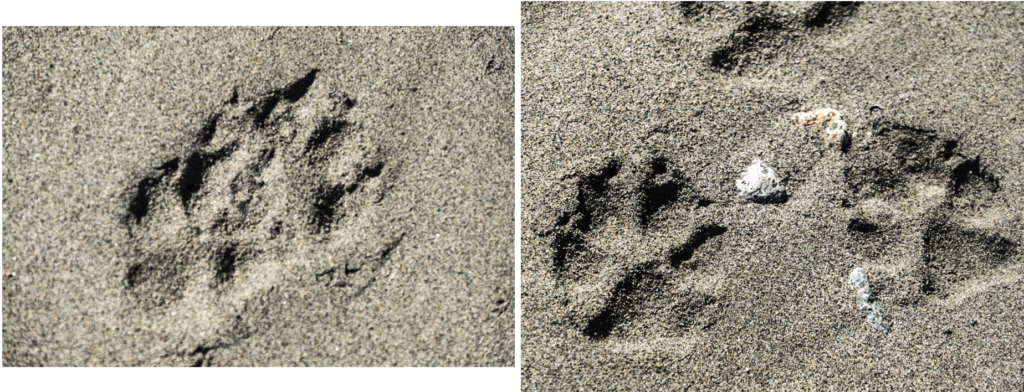
A trail leads from Columbia Cove to a sandy outer beach, so we headed back into the shallows around noon with camera, bear spray, a couple of beers, and some shoes appropriate for hiking on a muddy trail. We tied the dinghies to some big logs and headed through the forest for the beach.
The trail is about a quarter mile long, marked by colorful odds and ends tied to trees…fishing floats, retired hard hats, the shell of a yellow camping lantern. There are spots you need to climb a little and some slippery tree root steps, but it’s a relatively easy hike and the payoff is great.
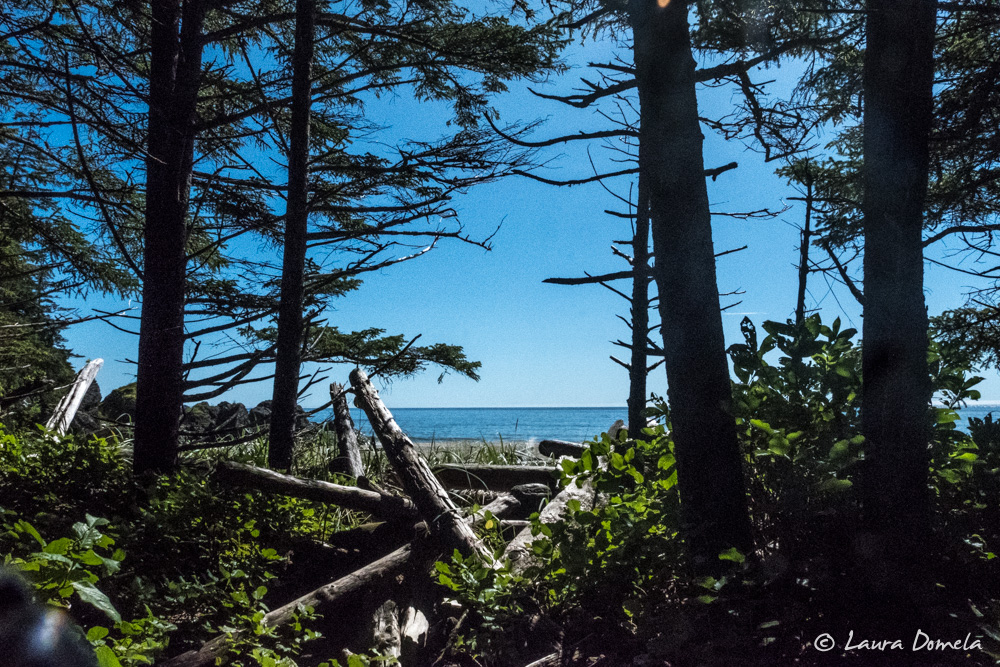
We wandered around on the beach for an hour or two and enjoyed the beautiful weather.
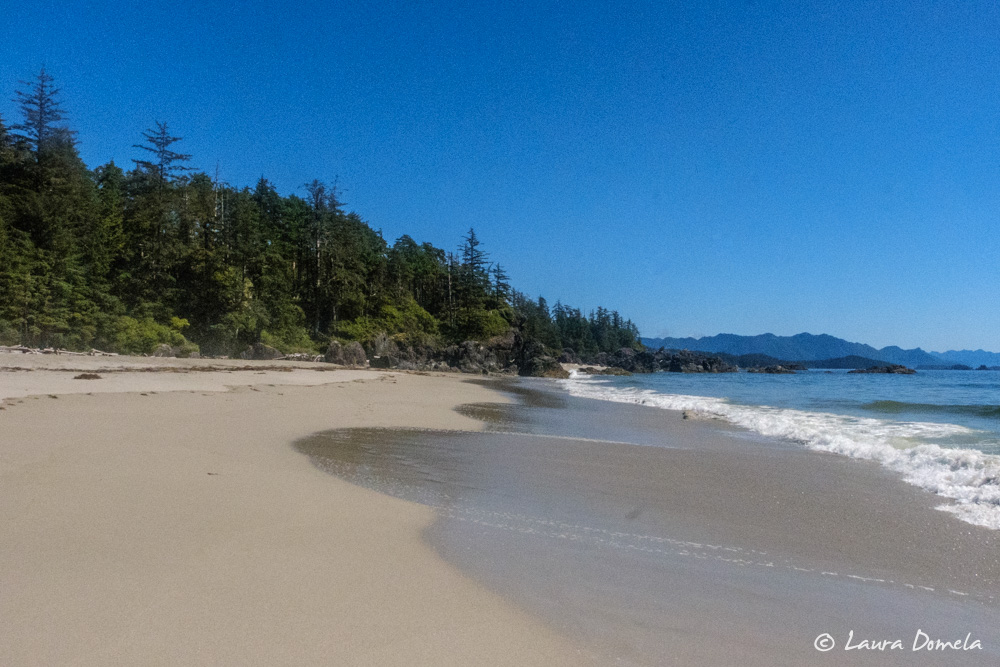
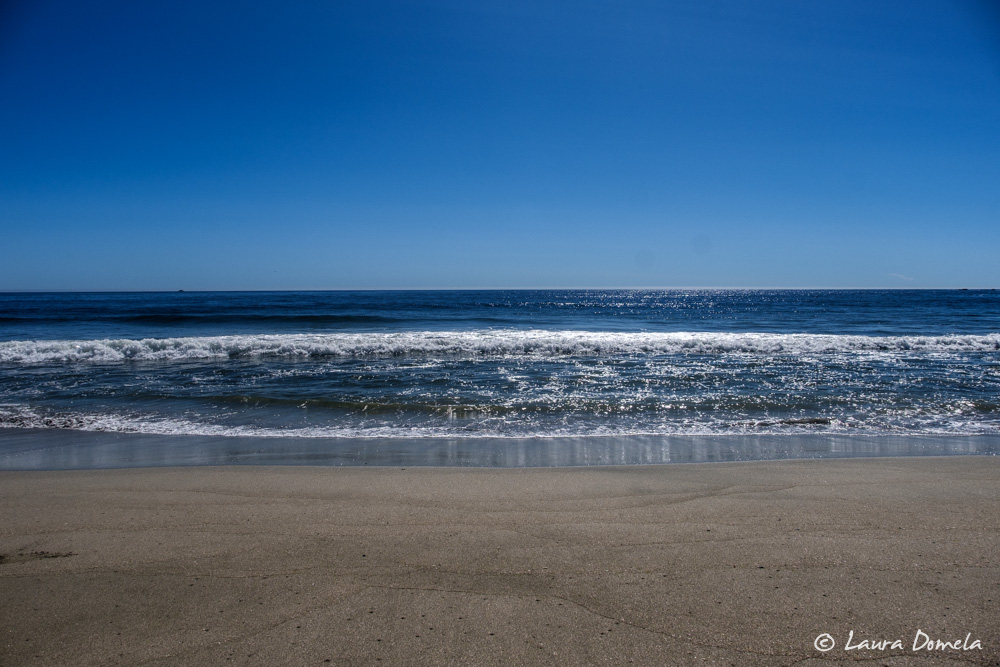
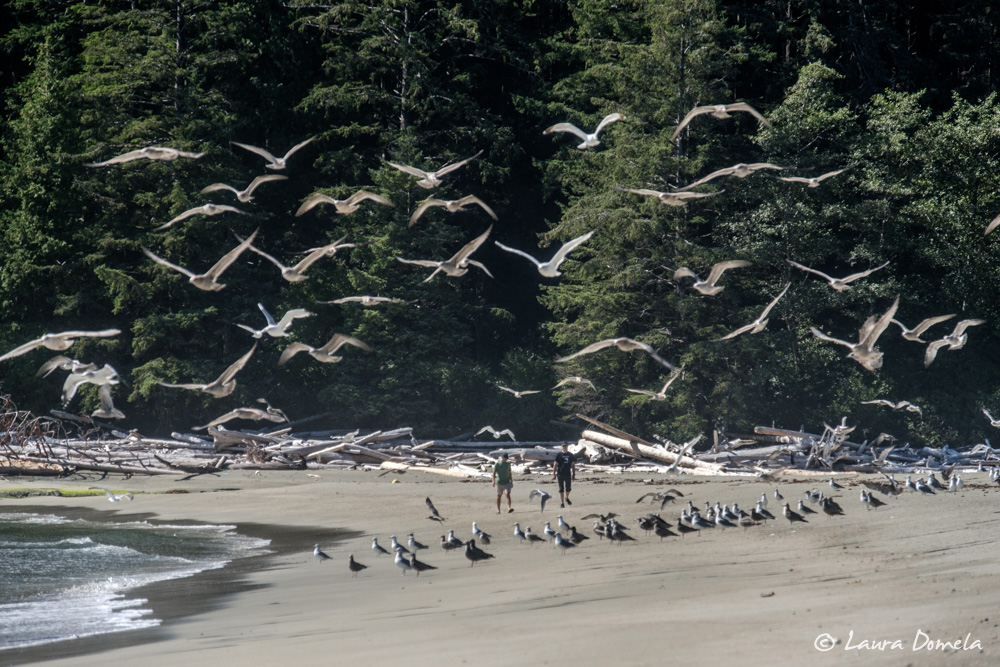
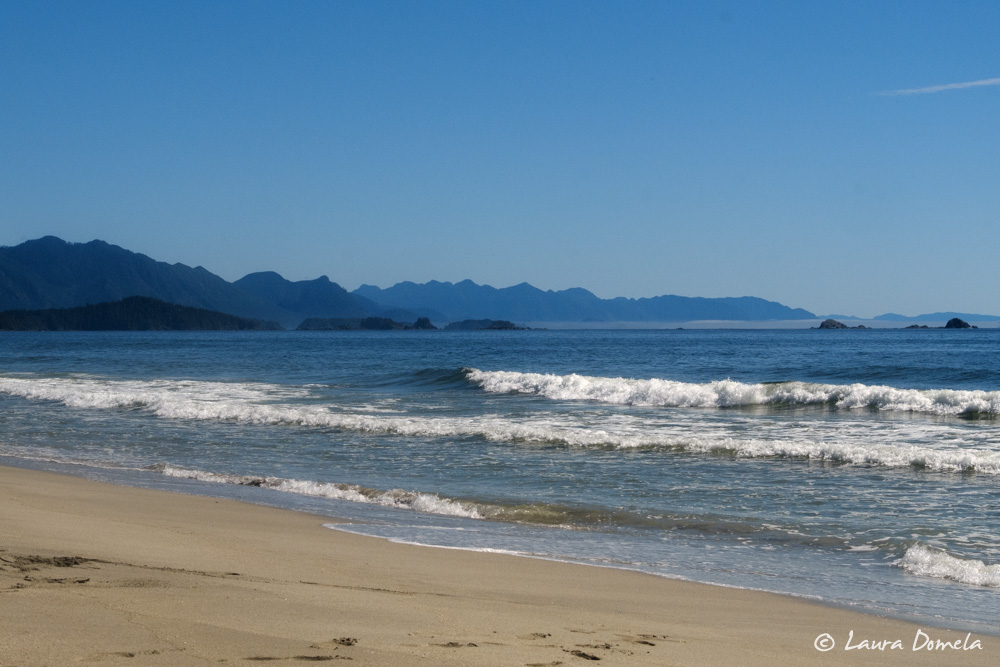
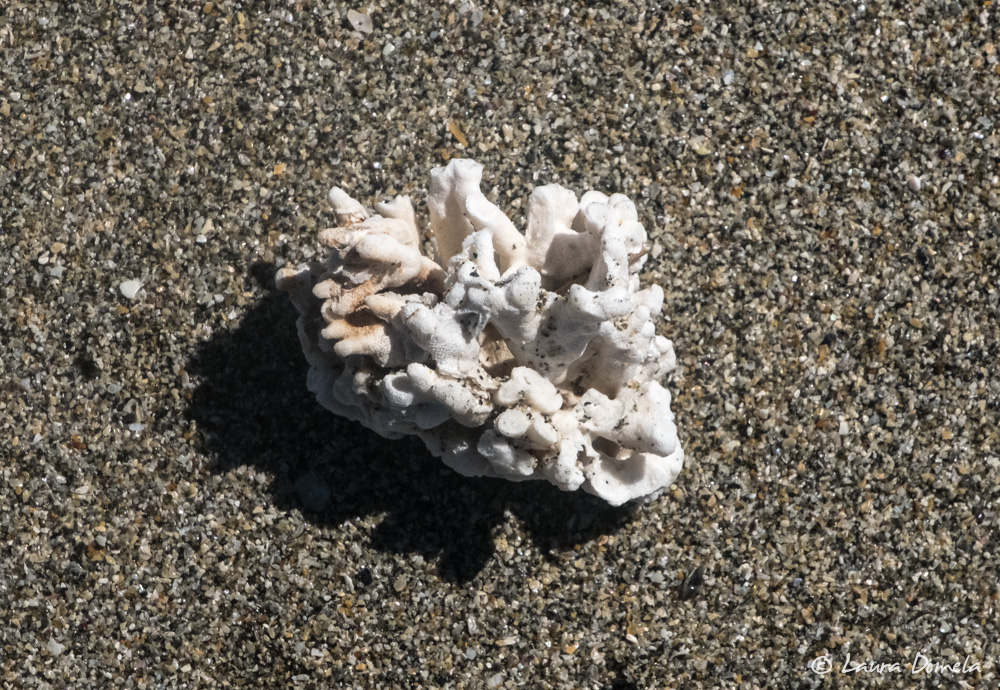
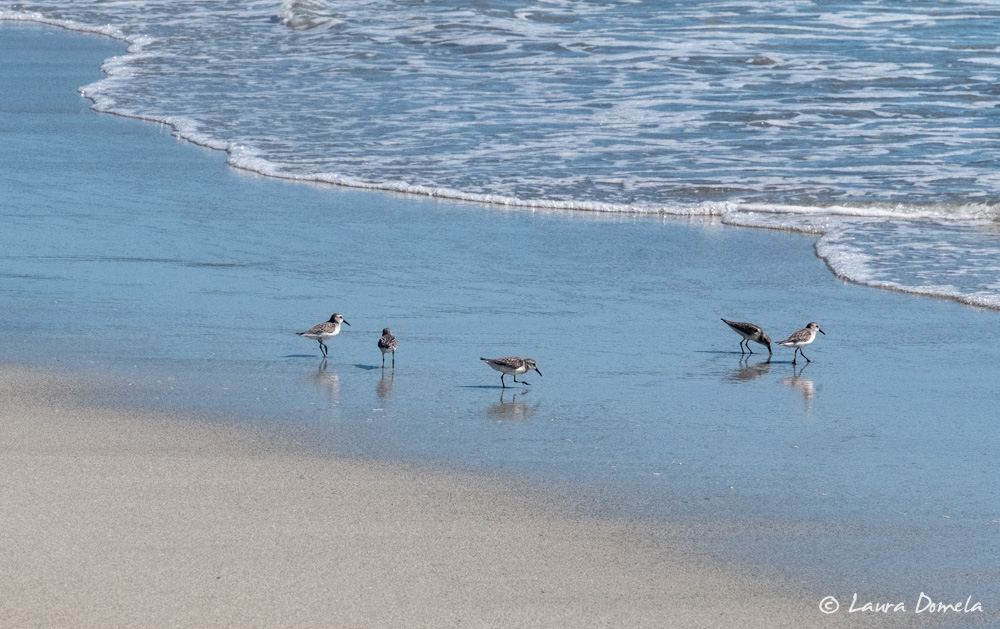
When we returned to where we’d tied our dinghies we soon realized that we must have misread the tide tables (even though all three of us checked them independently!) because, well, there was no more water.
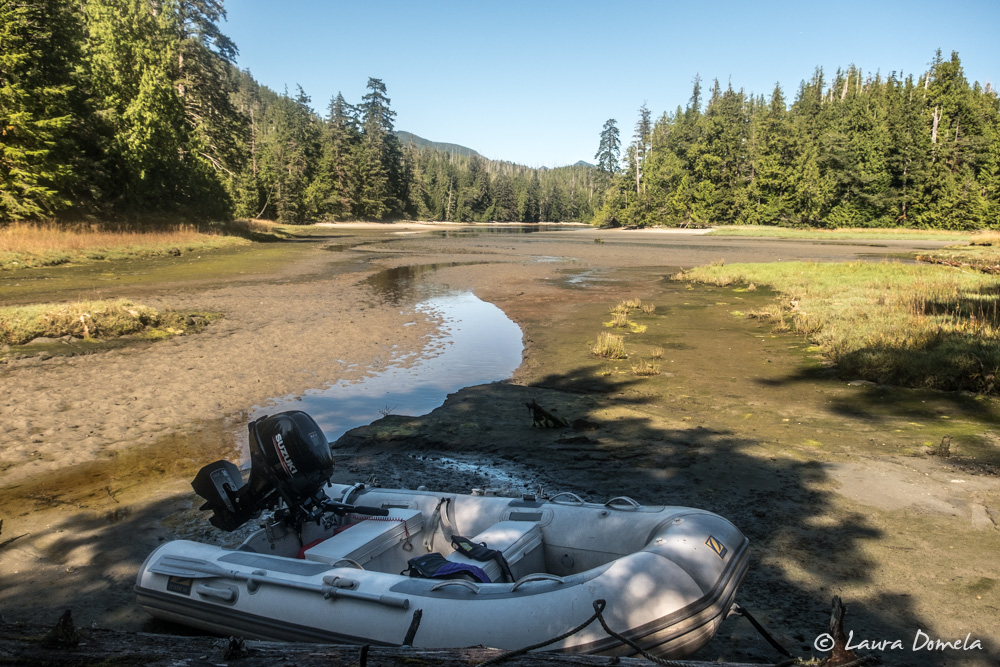
That little winding trickle of a stream was not deep enough to float a dinghy, so we chose the lightest one (Sam’s) and all three of us dragged and pushed it toward water…sweating and shoving the boat through the mud, one heave after another with the sun hot on our backs. Eventually, we were floating.
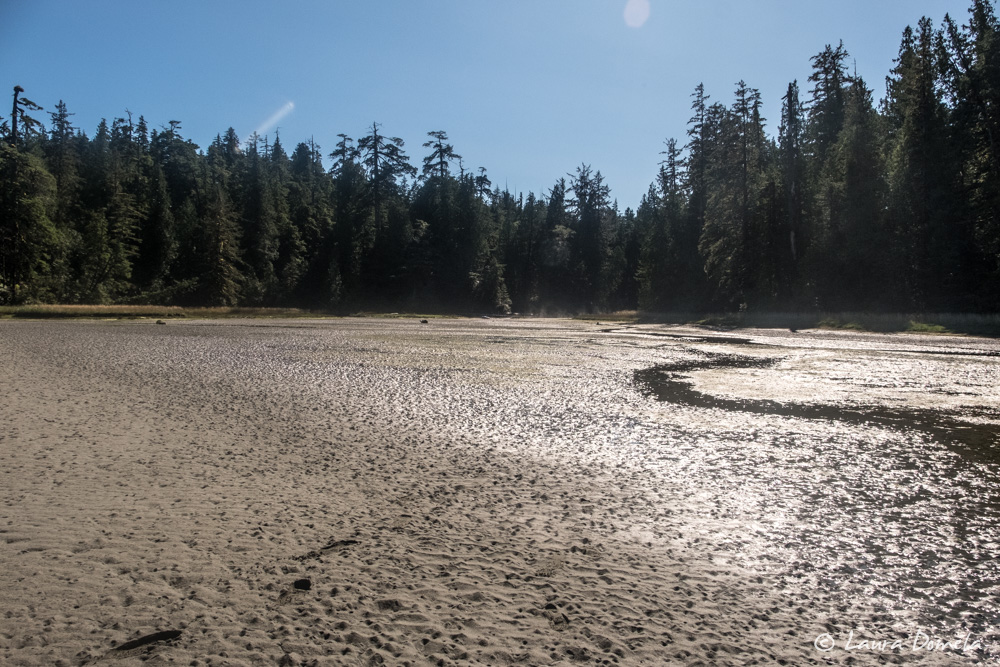
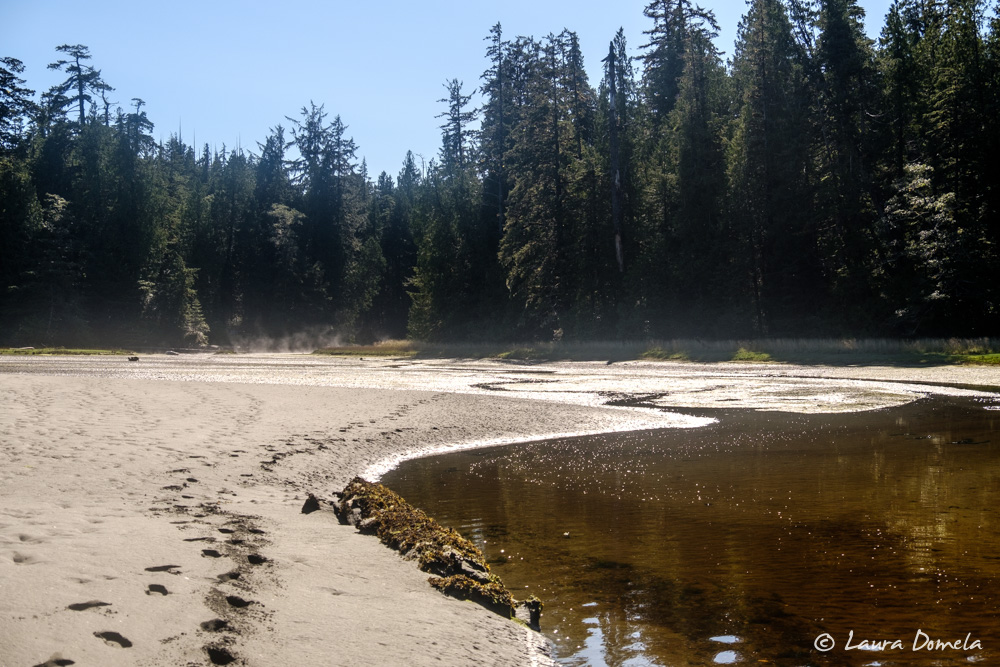
Back at the boats we rechecked the tide tables, and it turns out that the Garmin-reported tides for September 3 at Bunsby Islands were just plain wrong. 2:16 p.m. should have been high tide, but according to Navionics, high tide was at 12:17 p.m., right about the time we showed up at the trailhead.
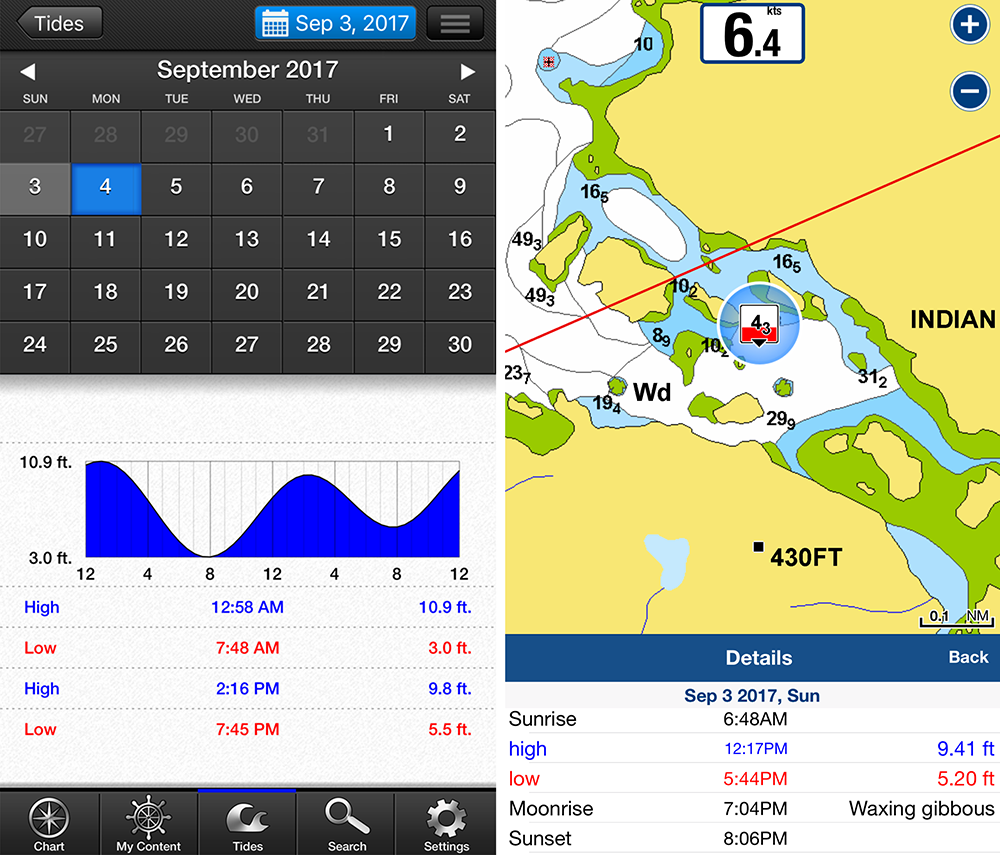
The next high tide wasn’t until 11:41 p.m. (Nighttime dinghy retrieval mission!)
It was still so warm out and after all that hiking and dinghy-slogging, we decided it was time for a swim! Sam put on fins and a mask and cleaned a few barnacles off his rudder, and the three of us all worked on a bit of waterline scrubbing…getting rid of unsightly muck. The boats got cleaner, and we felt refreshed after spending more time than we thought we would in the cold water. The water temp read 58 degrees on our weather instruments, but we think closer to the surface where we swam was probably a few degrees warmer than that.
After our swim, Kevin took some nice aerial photos of our anchorage (and our poor little grounded dinghy):
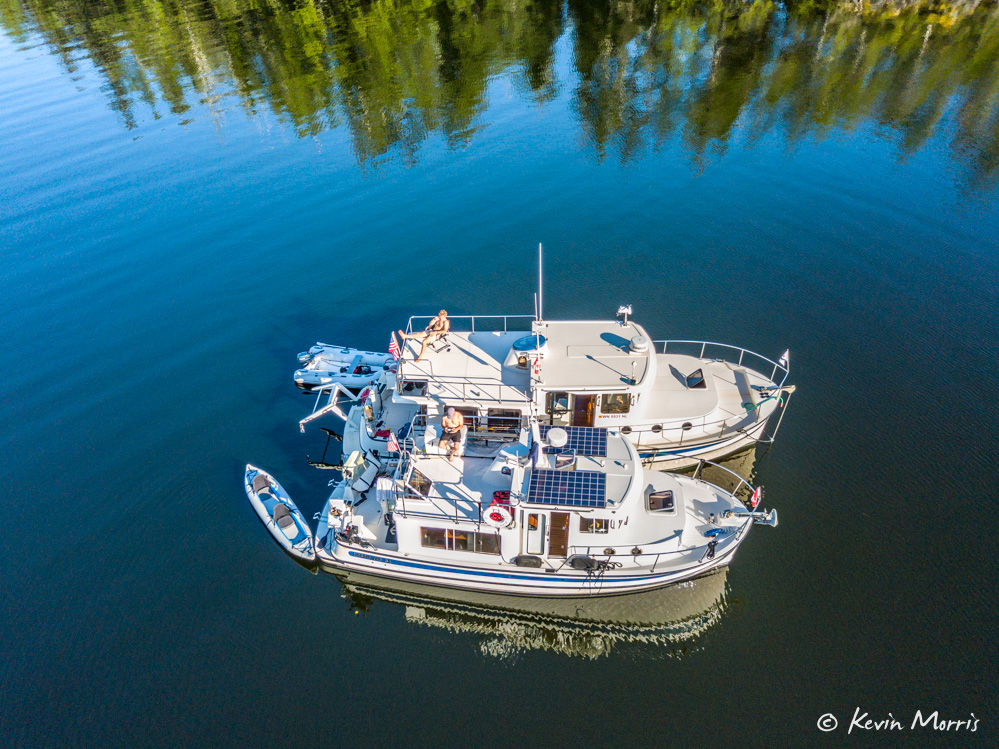
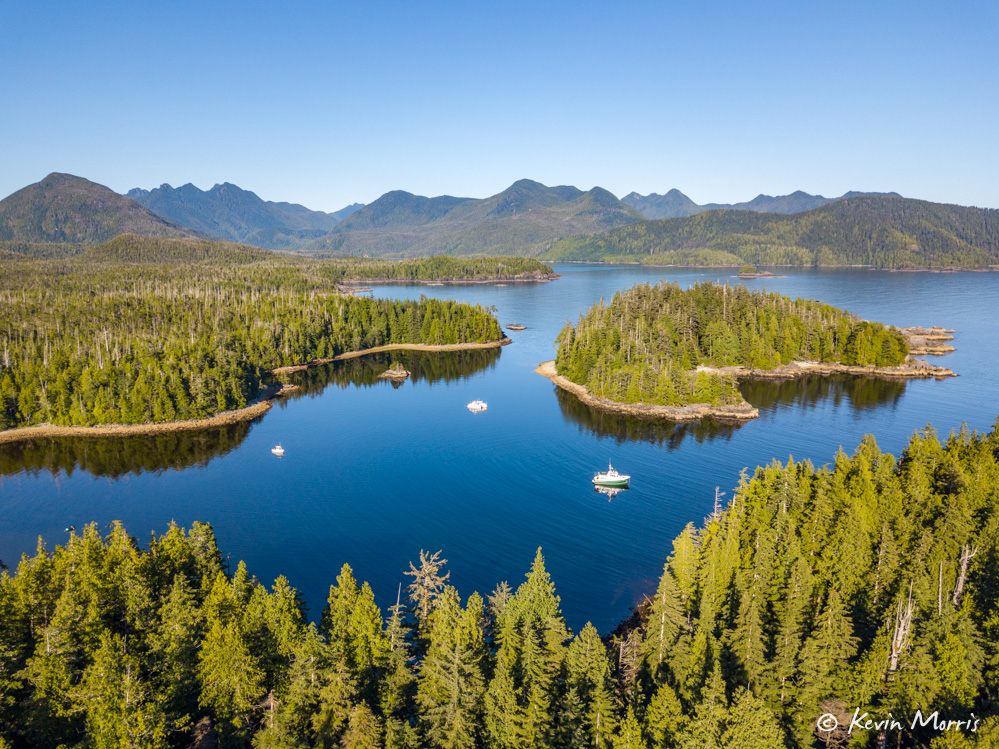
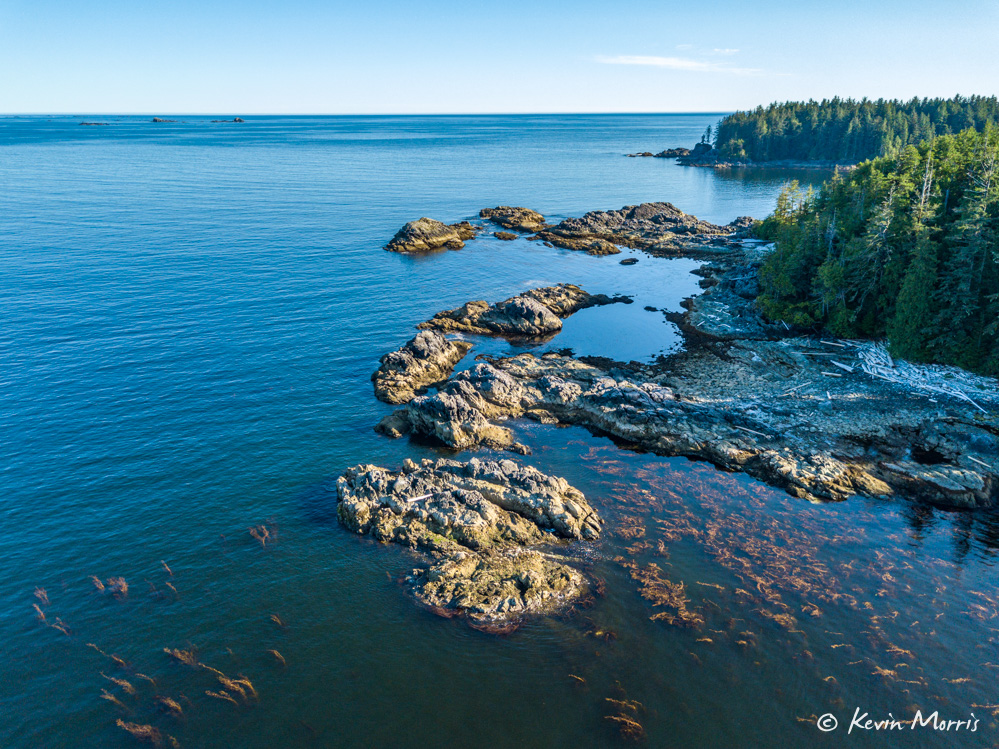
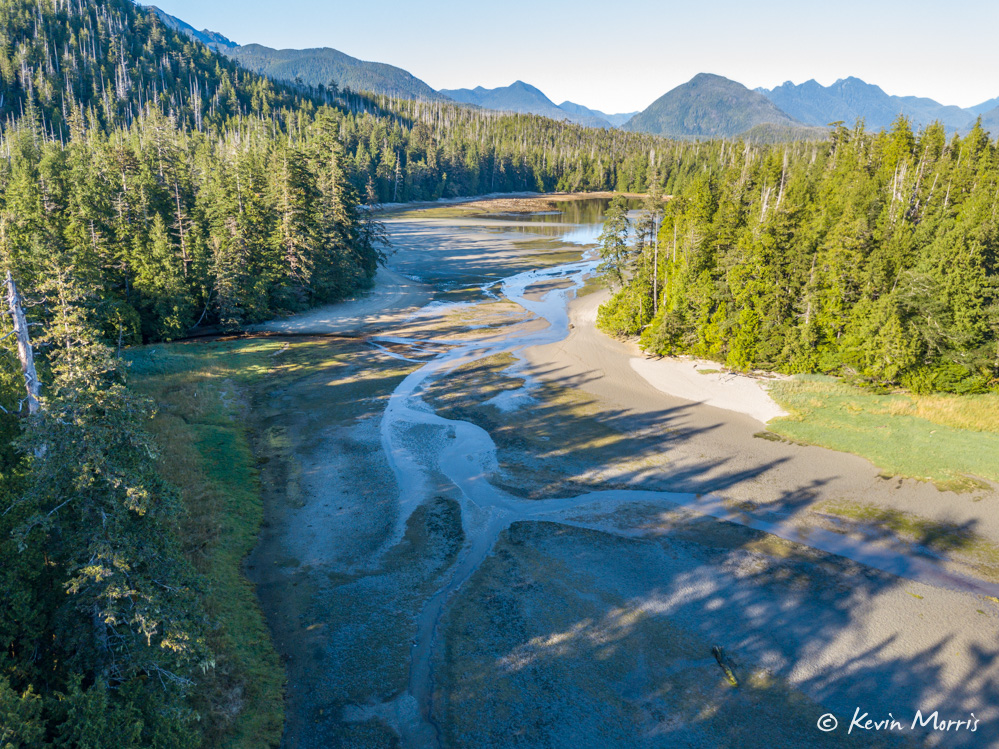
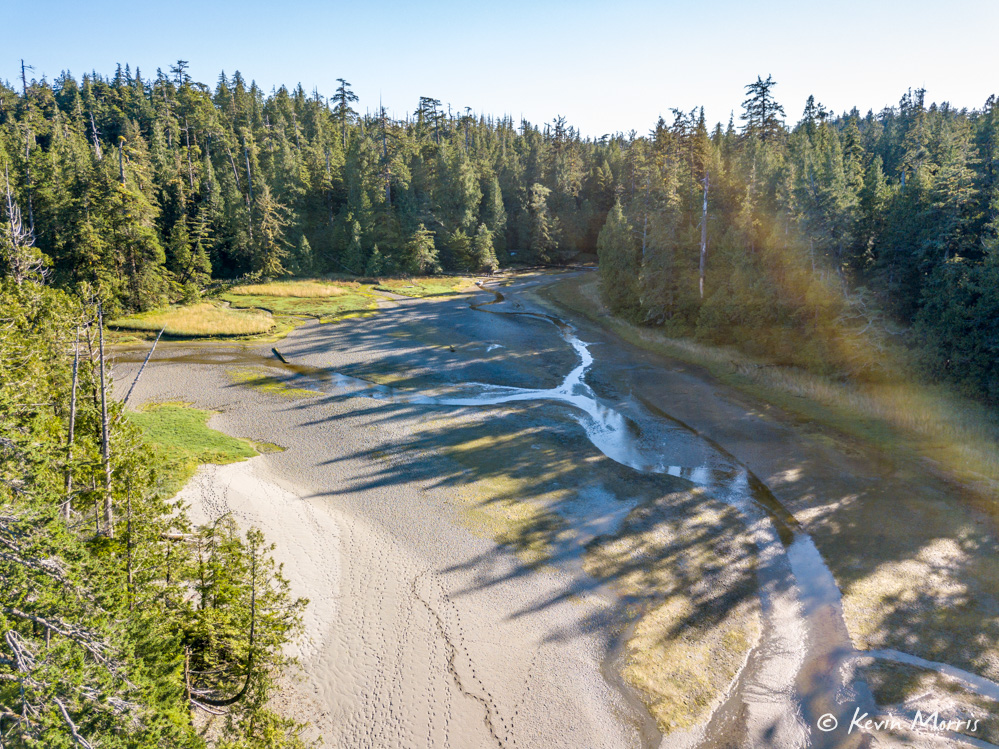
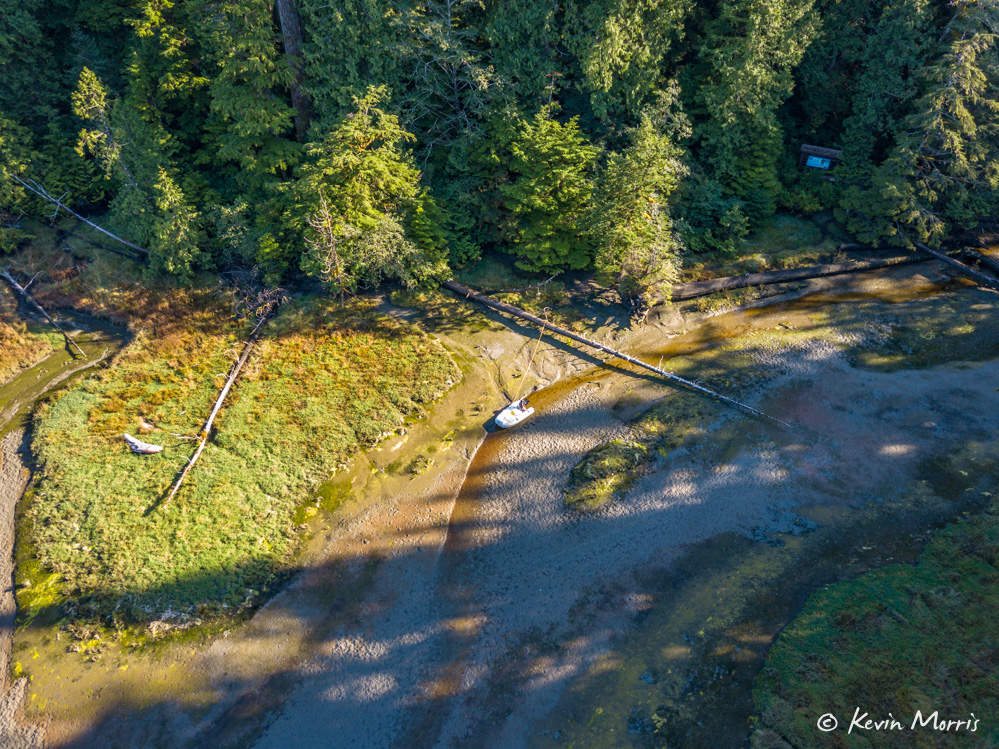
After dinner, we took another dinghy ride, enjoying the sunset and exploring another nearby beach.
On the way back we met some cruisers on another boat anchored in the cove and invited them over for a drink on the top deck. Conversation lasted until after 11:00 p.m., at which point we figured we should say goodnight and go retrieve the dinghy. They wanted to come along so we turned it into a group excursion! With a fullish moon to light our way (and some good flashlights) off we went! The tide was nice and high and we didn’t have to get out and walk at all…just motored right up to the dinghy, climbed in, untied ourselves and headed back out into the dark.
The next morning it was silent and dead calm, so out we went again with the kayak to see if there were any fresh prints on the beach. The tide was very low, so we beached the kayak, carried it up the shore a bit, and then walked the rest of the way.
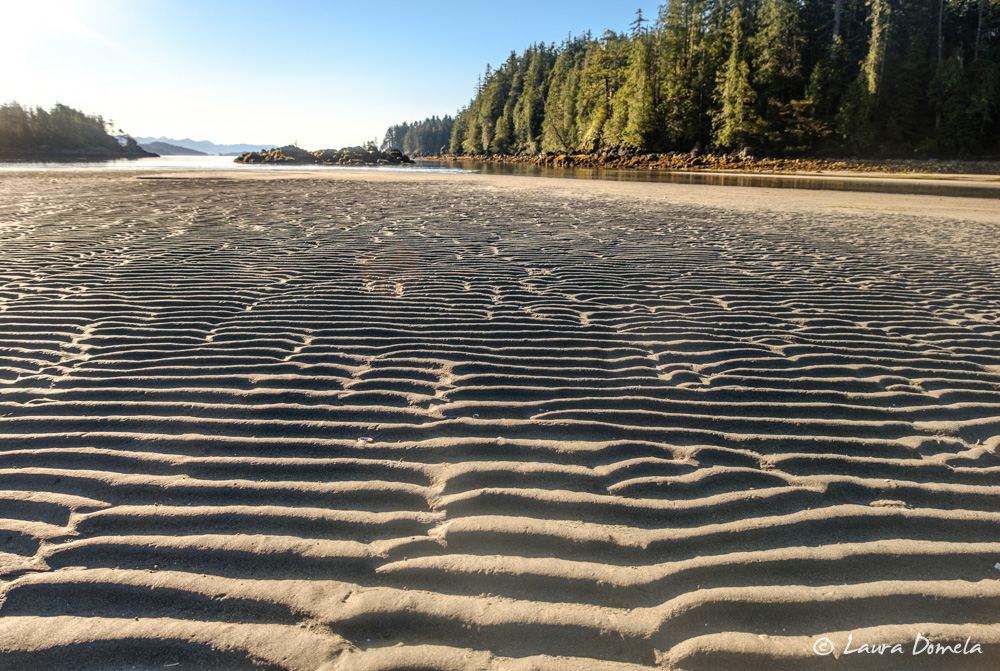
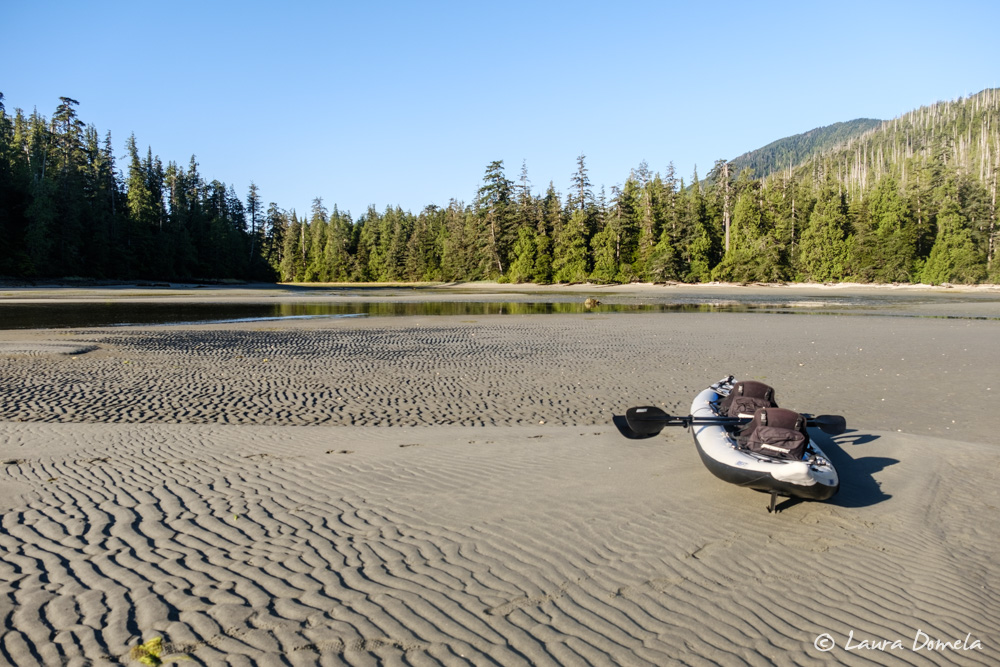
There were no obvious new prints, but we followed the ones we’d seen yesterday for a longer way down the beach.
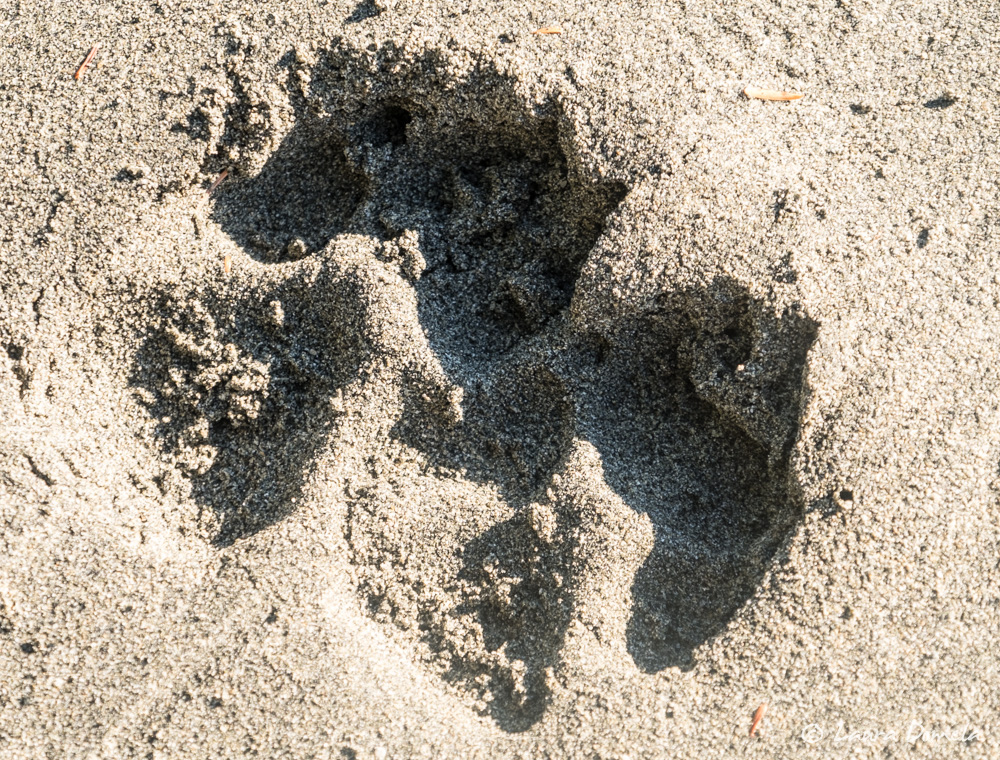
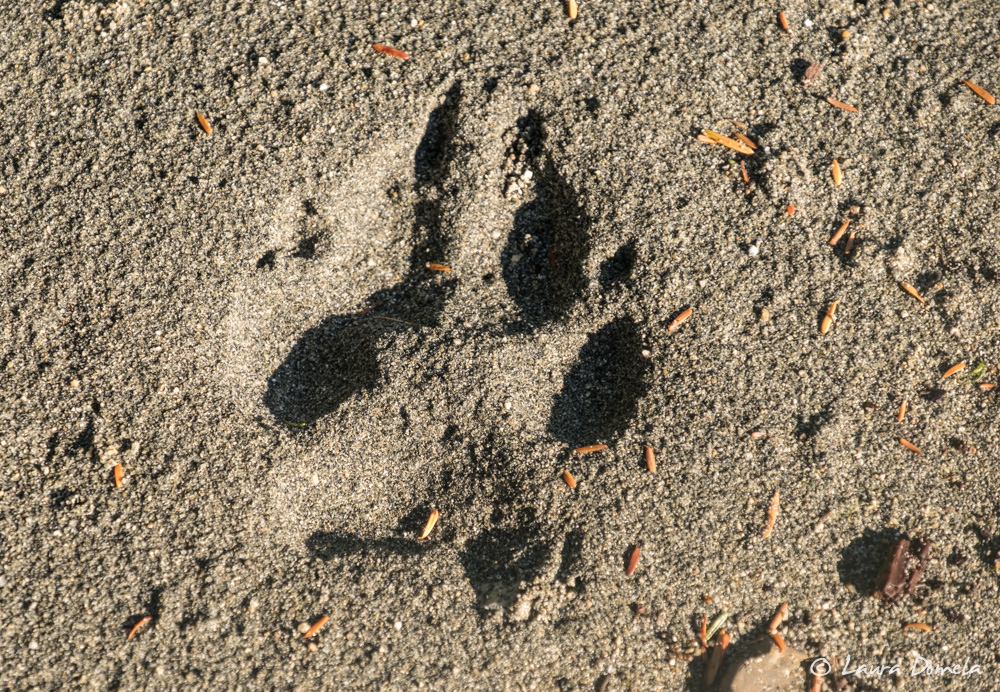
We followed the tracks south along the shore and pretty soon, came upon a spot with quite a few wolf prints, and a couple of small bear prints. These were small, as in perhaps a baby bear. Do wolves stalk baby bears?

Nature is pretty cool!


